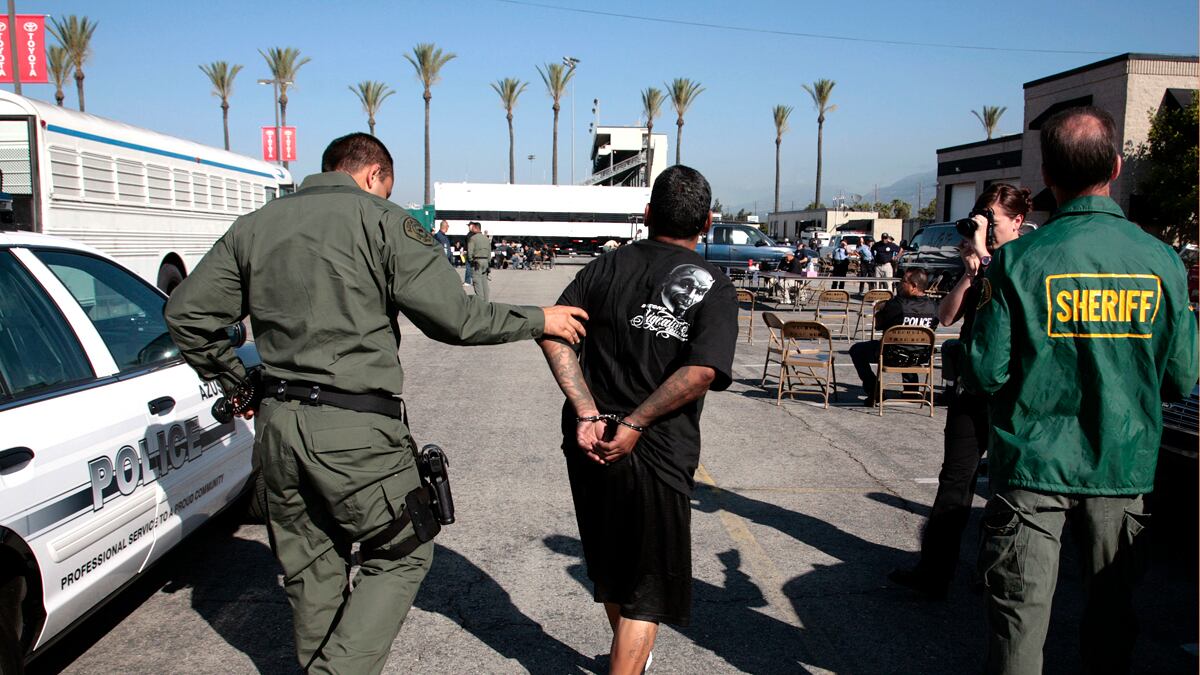In 1995, David M. Kennedy went to Boston on behalf of Harvard’s Kennedy School of Government to study violent crime. Like many American cities at that time, Boston was suffering a wave of homicides. After linking up with a special Boston Police Department task force, Kennedy and his team recognized that most of the killing was the work of a small handful of identifiable gang members. Rather than locking them all up, they tried something new: They met with the gang members and community leaders, offered them assistance in getting off the streets, and warned them that, if any single gang member committed another murder, they would crack down on the entire group.
Crime dropped almost overnight, and Kennedy’s “Operation Ceasefire,” as it has come to be known, has been implemented in more than 70 cities, addressing issues from gun violence to drug markets to juvenile robberies. Now, Kennedy recounts his experiences in a new book, Don’t Shoot: One Man, a Street Fellowship, and the End of Violence in Inner-City America.
Why did you decide to write a memoir?
One of the funny things for me is I meant to be a writer. I really wanted to be John McPhee. And so after graduating from college, I landed this case-writing job at the Kennedy School at Harvard, and that was really in its way like writing for The New Yorker. Not that anybody read the stuff in the same way, but you got lots of time to do your work. They were big pieces—like 10,000 words minimum and often larger. You got funds to travel and when you called somebody and said, “I’m from Harvard and I’d like to interview you,” people said yes. I just churned these things out, one after the other after the other. Then I got picked up by this group working on the community-policing project in Boston and that’s what got me into these neighborhoods and that was different.
What did you see in Boston, and what would you say was your main innovation there?
Typically in a city, there is law enforcement, community people doing outreach and intervention, and social-service providers, but it is all Balkanized. There isn’t any strategic backbone. Then there was this law-enforcement partnership [between these various groups] that had grown up around Detective Paul Joyce in Boston and they knew what they were doing, but they didn’t quite realize what they had. It took outsiders looking in. It took me six months of observation, and suddenly I could see that this was a completely different way of coming at these issues. When you looked at Boston from the right vantage point, you could see it was a whole new strategic framework for problems where you’re dealing with identifiable offenders, which is very common when you’re dealing with public-safety issues.

It stretches belief that you can deal with criminals by essentially sitting them down and telling them they have to stop.
You can’t believe it until you see it. Nobody expected Boston to switch off the way it did; no one expected the drug market in High Point, North Carolina, to go away forever after that first meeting. One of the truly amazing and just tremendously heartening realities turns out to be that people are much more willing to change than anybody thinks.
What about academics? They don’t always come off so well in Don’t Shoot.
That’s right. The most resistant community has been the intellectuals. Many academic circles have been central to what’s going on but others have watched and waited while others have been really resistant.
One of the criticisms is that there aren’t control groups against which to measure Cease-Fire.
Evaluations should serve the logic of an intervention. In a city like Boston, setting off gangs or gang members or neighborhoods as control groups is nonsensical. It’d be like saying I’ve got a flu patient so I’m going to treat her arm. There are other, newer versions of Cease-Fire that have been appropriate for random assignment—Chicago, whose program acted on individuals, for example, or probation violators in Hawaii. The evaluations are very positive.
What about the criticism of Cease-Fire that, when it is applied to inner-city drug markets, it simply pushes the drugs underground. Is it better to have crime underground?
Well that was the presumption, and we were absolutely explicit that yes, it’s better. The people who say “all it does is push drug-dealing underground” are living in communities that have thriving underground drug markets. If you attend or teach at a college, live in a suburb, work in an ordinary business, and you are a middle- or upper-class and successful, safe white person you are living in an underground drug market. That’s not a good thing but it’s a much better thing than living in those communities with a drug dealer on your front lawn and drug groups settling their disputes with handguns. Part of what is infuriating about these folks who say we have to go in and continue to arrest every young man and kick in every family’s door is they take for granted the same conditions that they are denying to these communities.
Also, it’s beginning to look like maybe the drug markets don’t just go underground. It looks like there is a real and significant overall reduction in drug-selling and even drug use by local community people.
Does the stagnant economy, where there are fewer jobs to go around, make it harder to host interventions and get criminals off the streets?
It doesn’t look like it. Crime doesn’t stop because the criminals get straight jobs. Nobody stands up in those meetings and says, “Put your gun down and we’ll get you a job.” Leaving the street is not about getting a job; leaving the street is like stopping being an alcoholic or a sex addict. People need help with the small grinding things that keep them from being able to get anywhere—they’ve never had a driver’s license or a Social Security card; they don’t have a fixed address or they don’t think it’s worth getting a job because the probation department is going to take everything. Crime stops because they have simply changed the way they’re behaving.
In Baltimore, you encountered political problems in implementing the program: it was difficult to get all the different politicians and agencies on board. How common are such problems?
The good thing is there’s been success after success and people have recognized that. These days, if you’re a new police chief or prosecutor, you’re hearing about this from your peers. It’s been going on for almost 20 years and people who have come up through the ranks have experienced or seen it. Baltimore has begun building the basics of the program into a lot of what they do. They’re not doing zero-tolerance anymore and for the first time in a really long time, it’s trending the right way.
Is zero-tolerance alive and well?
There’s no such thing as “zero-tolerance.” It’s a bumper sticker, not a strategy and it’s not what the people who developed “broken windows” and public-order ideas ever meant. It’s the bastardized outcome of a very fundamental insight which is that where neighborhoods are in chaos, bad things happen. But you don’t have to deal with neighborhoods in chaos by arresting everybody in sight. There’s a distinction to be made between policing that is indiscriminate and makes a virtue of arresting as many people as possible and policing that is selective and surgical and tries to avoid arresting people by putting them on notice and using deterrents and mobilizing the community. There’s no question you can drive down crime using “zero-tolerance” but it carries enormous costs—it ruins people’s lives, alienates neighborhoods, and undercuts the legitimacy of law enforcement.
What do you make of people who say we should fight crime by remedying root causes—income inequality, poor education, etc. Are root causes real?
Of course they are. Mostly, I don’t disagree with “root causers.” But in a certain and very important way the root-cause argument is wrong. Why does a 16-year-old boy go and start selling drugs? If he walks out onto the corner and there’s a street market, he’ll sell drugs; if there is no street market, he will not sell drugs on the corner. He may sell drugs the way white kids sell drugs, which is quietly and privately and out of the lockers of their nice high school. But he will not stand on the corner and sell to white jerks who drive in from other neighborhoods and he will not carry a gun because there are other people out there gunning for him.
The root-cause argument says this is all just an assembly line and it only moves in one direction and that’s not true. And what it means is that there are all these positive feedback loops. For example, people who would like to go buy business property in this very cheap part of town won’t do it because they know people won’t come shop there because they know people are scared to go outside. And if you do something about people being scared to go outside, then suddenly economic development becomes much more appealing.
Does the economic climate make it more difficult politically to sustain these programs?
It’s interesting. The economic climate is really giving this all a boost. What a lot of people know about what’s traditionally been done on these issues is that it doesn’t work. And the government and agencies have been able to get away with that when there’s been money to throw away, but it’s not there anymore. And what we’re seeing right now is exactly the opposite of people saying, “We can’t do it because we don’t have the money.” They say, “We know we’ve been throwing the money away and we can’t afford to anymore. This stuff works and it doesn’t cost more—it’s actually cheaper than what we’ve been doing.”






